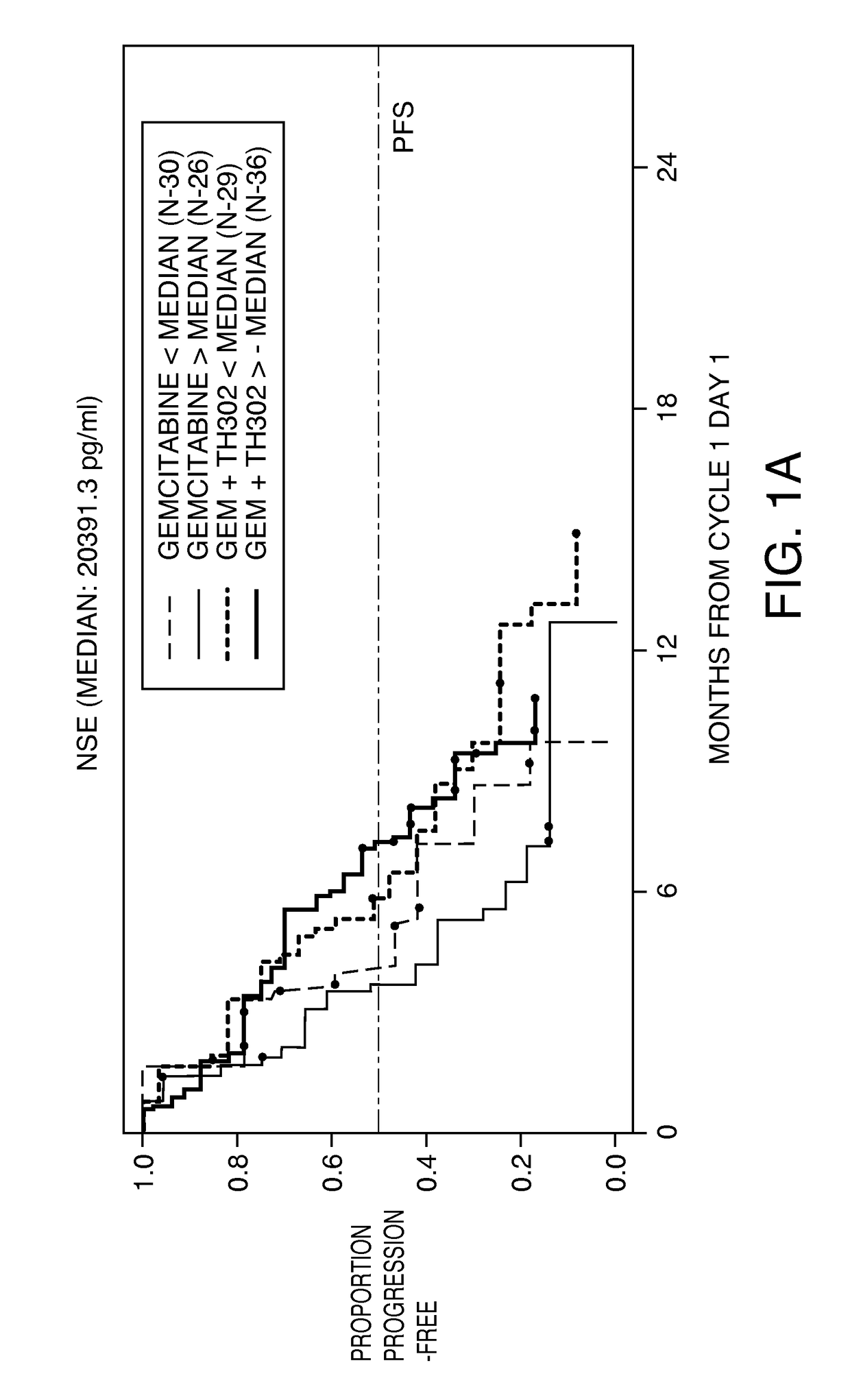Predictive biomarker for hypoxia-activated prodrug therapy
a biomarker and anti-hypoxia technology, applied in the field of screening and/or treating cancer patients, can solve the problems of adverse side effects of patients, and difficult to kill cancer cells without damaging or killing normal cells
- Summary
- Abstract
- Description
- Claims
- Application Information
AI Technical Summary
Benefits of technology
Problems solved by technology
Method used
Image
Examples
descriptive embodiments
[0058]The disclosure further provides diagnostic, predictive, prognostic and therapeutic methods, which are based, at least in part, on determination of the identity of the expression level of a marker of interest. In particular, the amount of enolase in a cancer patient sample can be used to predict whether the patient is likely to respond favorably to cancer therapy utilizing a hypoxia-activated prodrug of formula (I).
[0059]It shall also be understood that variants, mutants, parts or homologous protein sequences of enolase having the same function, are included in the scope of definition as well as protection. Possible alterations comprise deletion, insertion, substitution, modification and addition of at least one amino acid. Physiological fragments, secondary modifications, species-dependent alterations as well as allelic variants of enolase are also encompassed by the present invention. Preferably, the homology amounts to at least 85%, more preferably at least 95%, most prefera...
example
[0109]Most solid tumors have significant areas of hypoxia that contain cells that are resistant to traditional chemotherapy and radiation treatment. Thus, therapeutics that can specifically target these resistant hypoxic zones should provide additional anti-tumor activity and clinical benefit. TH-302 is a hypoxia-targeted prodrug of a DNA alkylating agent that is being tested in multiple oncology clinical trials. More specifically, TH-302 is a nitroimidazole-linked prodrug of a brominated version of isophosphoramide mustard (Br-IPM). TH-302 is reduced at the nitroimidazole site of the prodrug by intracellular reductases, and when exposed to hypoxic conditions, leads to the release of Br-IPM. There are several factors that affect the sensitivity of different cancer models to TH-302 including the degree of hypoxia in the tumor, intracellular reductase enzymes such as NADPH:cytochrome P450 (CYPOR) and mutations in DNA repair genes such as BRCA1, BRCA2 or FANCA. The precise one-electron...
PUM
| Property | Measurement | Unit |
|---|---|---|
| density | aaaaa | aaaaa |
| surface area | aaaaa | aaaaa |
| resistance | aaaaa | aaaaa |
Abstract
Description
Claims
Application Information
 Login to View More
Login to View More - R&D Engineer
- R&D Manager
- IP Professional
- Industry Leading Data Capabilities
- Powerful AI technology
- Patent DNA Extraction
Browse by: Latest US Patents, China's latest patents, Technical Efficacy Thesaurus, Application Domain, Technology Topic, Popular Technical Reports.
© 2024 PatSnap. All rights reserved.Legal|Privacy policy|Modern Slavery Act Transparency Statement|Sitemap|About US| Contact US: help@patsnap.com










